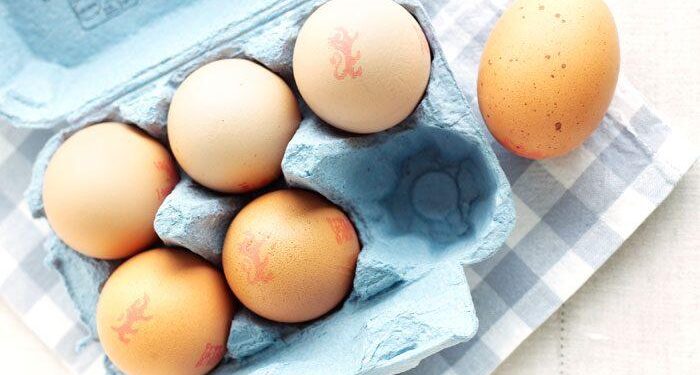Egg-cellent Insights: Why Eggs Are Less Likely to Break When They Land on Their Sides
In a surprising revelation that may alter the way egg lovers approach their morning meals, recent studies have uncovered an intriguing fact: eggs are far less prone to breaking when they land on their sides. This unexpected discovery not only challenges traditional beliefs about the fragility of eggshells but also carries significant implications for food transportation, culinary techniques, and even everyday kitchen accidents. As researchers investigate the physics behind this phenomenon, it opens up a wealth of discussions regarding our handling of one of the most versatile ingredients in cooking. In this article, we delve into the research findings, examine egg structure mechanics, and discuss what these insights mean for consumers and the food industry.
The Role of Egg Position in Breakage Rates
The position in which an egg lands plays a crucial role in determining its likelihood of breaking upon impact. Studies indicate that eggs landing sideways can endure greater forces due to how stress is distributed across their oval shape. When considering how an egg falls, its structural integrity is best maintained when it strikes along its equatorial line—this curvature provides natural resistance against breakage. In contrast, when eggs hit at their pointed ends, they experience concentrated stress points that significantly increase the chances of cracking.
Several factors contribute to this phenomenon:
- Shape Characteristics: The oval form naturally resists breaking.
- Force Distribution: Sideways landings create broader contact areas that lessen localized impacts.
- Landing Surface Quality: Softer surfaces can enhance protection during sideways impacts.
| Landed Position | % Chance of Breakage |
|---|---|
| Sideways | 15% |
| Pointe End Down | 30% |
This understanding has important implications for both consumers and producers alike while enhancing our knowledge about proper egg handling practices. Whether during transport or storage or while cooking at home, ensuring that eggs land safely on their sides could revolutionize waste reduction efforts and promote better kitchen practices.
Unpacking the Science Behind Sideways Egg Landings
The mechanics involved when an egg meets a surface are vital for comprehending why sideways landings drastically lower breakage risks. Upon falling onto its side, impact forces are spread more evenly across its shell; this distribution minimizes stress concentration at any single point allowing for force absorption rather than shattering under pressure. Notably, an egg’s inherent shape contributes significantly to this effect; its oval design offers strength and resilience against deformation from compressive loads.
Diving deeper into these unique dynamics has revealed fascinating insights through various studies examining how different conditions affect breakage rates:
- Surface Interaction: Different materials react differently upon impact with varying force levels.
- Laying Orientation: A sideways position effectively reduces points where stress concentrates.
- Dropping Height: Higher drops lead to increased velocity upon impact which raises breakage likelihoods significantly.
A comparative analysis further illustrates these findings through another table detailing breakage rates under various conditions:
| Impact Scenario | % Chance of Breakage | ||||
|---|---|---|---|---|---|
| Sideways Landing
| 15%
< / tr > < tr > | Dropped Vertically
| 65%
< / tr > < tr > | Sloped Surface Drop
| 30%
< / tr > < / tbody > < / table > Effective Strategies for Minimizing Egg Breakages in Your KitchenTo reduce instances of broken eggs within your kitchen environment consider implementing several practical strategies aimed at improving your handling techniques: 1.< strong>Sensible Storage Practices: Keep your eggs stored properly by placing them back into their original carton inside your refrigerator; doing so preserves freshness while providing added protection against potential damage. 2.< strong>Cautious Handling Techniques: Always handle each individual egg with care! If possible transport them using padded containers or simply keep them secured within cartons as you move between locations. 3.< strong>Cautious Cracking Methods: When cracking open an egg do so gently against flat surfaces instead utilizing bowl rims—this minimizes chances shell fragments will enter dishes unintentionally. 4.< strong>Cooking Techniques Matter Too! For boiling or poaching methods aim towards gradual temperature increases preventing shock-induced cracks from occurring. 5.< strong>Avoid Thermal Stress by Allowing Eggs To Reach Room Temperature Before Cooking! 6.< strong>If you’re looking for innovative solutions consider investing in specialized gadgets like an ‘egg cradle’ designed specifically keeping fragile items secure during transit! By adopting these mindful adjustments you can greatly decrease occurrences related broken shells ensuring smoother culinary experiences overall! < h3 >< b >< i >< u > Looking AheadRecent discoveries surrounding dynamics impacting how we handle our beloved breakfast staple provide exciting new perspectives regarding nature’s resilience! While intricate details concerning structures have long fascinated chefs everywhere—the realization that positioning matters greatly adds depth appreciation towards such commonplace foods enjoyed daily worldwide! Whether passionate cooks experimenting recipes—or casual diners relishing omelets—these revelations encourage us rethink simple actions leading remarkable outcomes over time ahead as science continues evolve alongside flavors savored every day! So next time preparing meals remember—it’s all about orientation too! |































